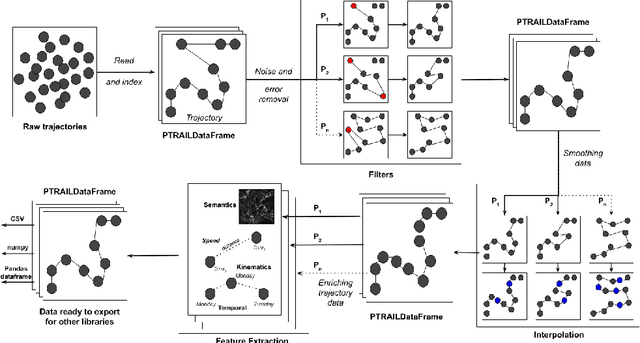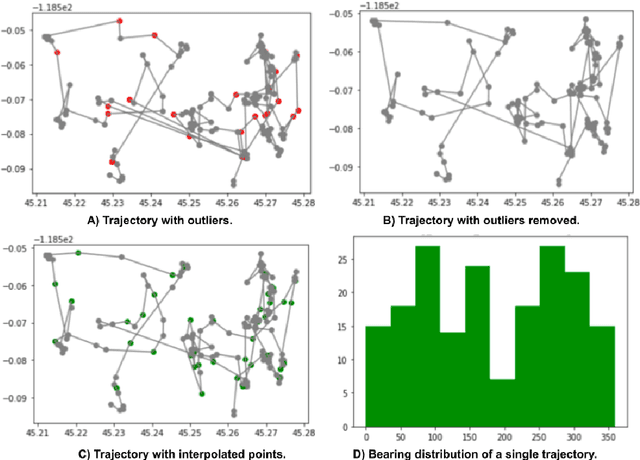Salman Haidri
ANALYTiC: Understanding Decision Boundaries and Dimensionality Reduction in Machine Learning
Dec 29, 2023Abstract:The advent of compact, handheld devices has given us a pool of tracked movement data that could be used to infer trends and patterns that can be made to use. With this flooding of various trajectory data of animals, humans, vehicles, etc., the idea of ANALYTiC originated, using active learning to infer semantic annotations from the trajectories by learning from sets of labeled data. This study explores the application of dimensionality reduction and decision boundaries in combination with the already present active learning, highlighting patterns and clusters in data. We test these features with three different trajectory datasets with objective of exploiting the the already labeled data and enhance their interpretability. Our experimental analysis exemplifies the potential of these combined methodologies in improving the efficiency and accuracy of trajectory labeling. This study serves as a stepping-stone towards the broader integration of machine learning and visual methods in context of movement data analysis.
PTRAIL -- A python package for parallel trajectory data preprocessing
Aug 26, 2021



Abstract:Trajectory data represent a trace of an object that changes its position in space over time. This kind of data is complex to handle and analyze, since it is generally produced in huge quantities, often prone to errors generated by the geolocation device, human mishandling, or area coverage limitation. Therefore, there is a need for software specifically tailored to preprocess trajectory data. In this work we propose PTRAIL, a python package offering several trajectory preprocessing steps, including filtering, feature extraction, and interpolation. PTRAIL uses parallel computation and vectorization, being suitable for large datasets and fast compared to other python libraries.
 Add to Chrome
Add to Chrome Add to Firefox
Add to Firefox Add to Edge
Add to Edge